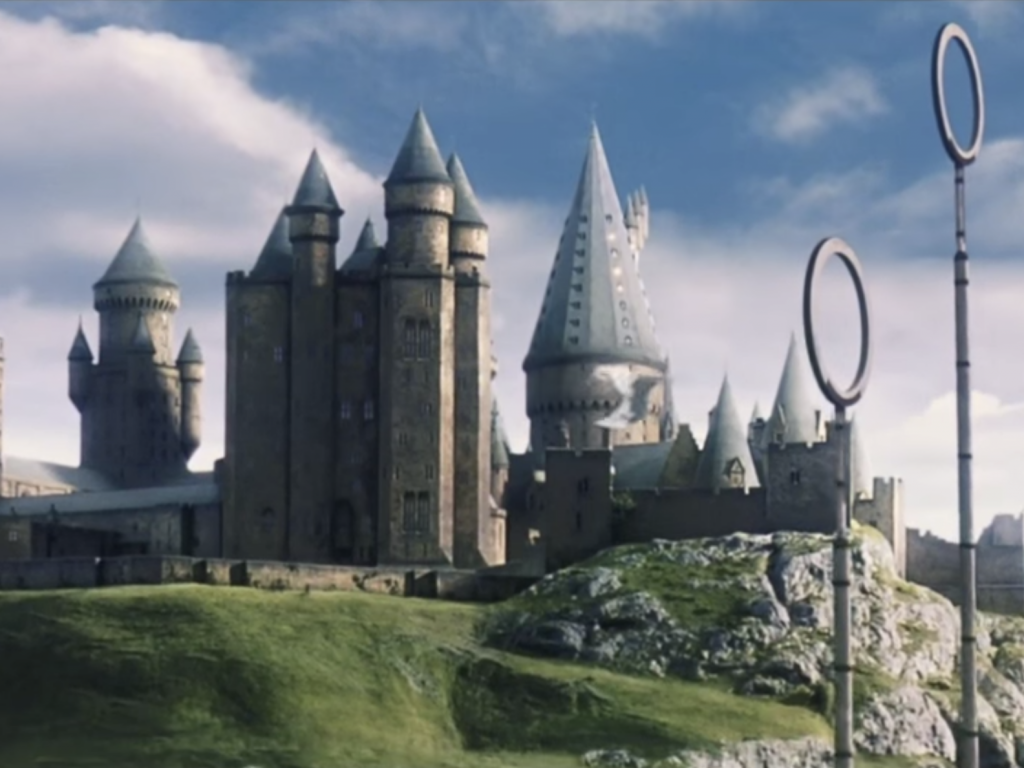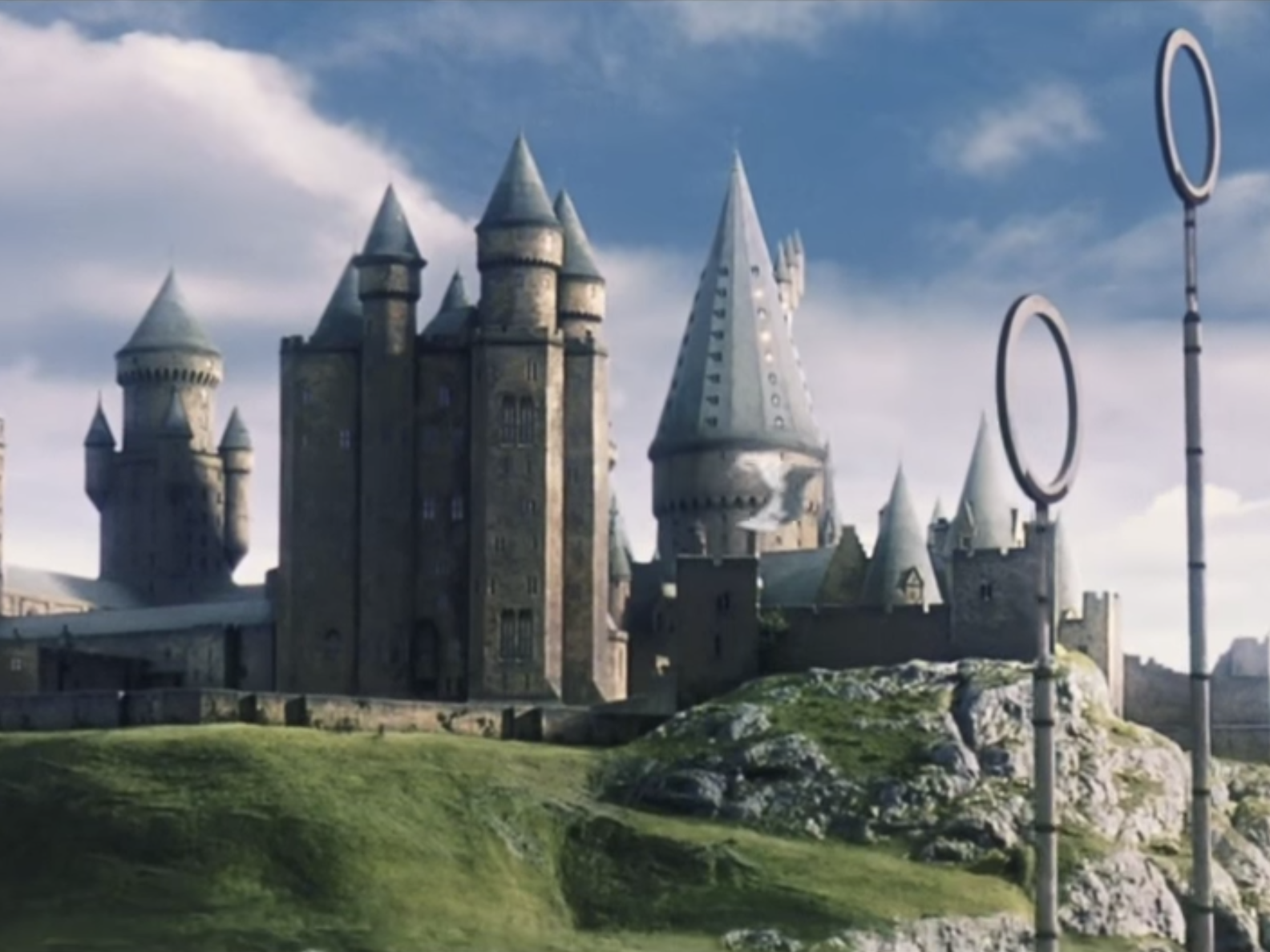
Warner Bros.
- Hogwarts School of Witchcraft and Wizardry is the backdrop for much of the "Harry Potter" series.
- Despite its prevalence, the castle holds a lot of unknown history and secrets within its walls.
- It was founded in the late tenth century, and tuition is covered by the Ministry of Magic.
- Visit Insider's homepage for more stories.
Hogwarts School of Witchcraft and Wizardry was the primary setting for the "Harry Potter" series. But despite its prevalence in the books and films, little is known about the castle and its many secrets.
Prior to using her platform to spread transphobic messages, the series' controversial author, J.K. Rowling, was known to use Twitter, interviews, and the official Wizarding World website (originally known as Pottermore) to expand the "Harry Potter" canon by sharing new information about characters and plotlines beyond the seven books.
With all that information in mind, here are some interesting facts even the biggest "Harry Potter" fans might not know about Hogwarts:
The school was built in the late 10th century
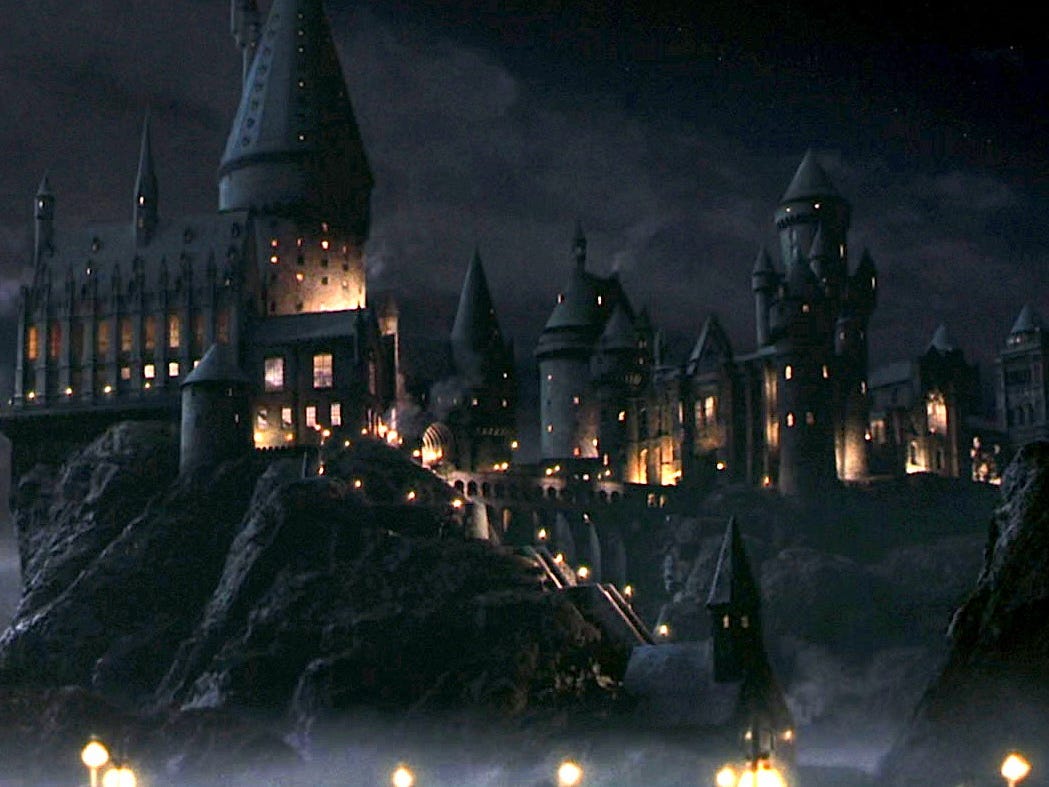
Warner Bros
The exact date the castle was built is unknown, but we can infer that Hogwarts was founded sometime in the late 10th century because there are multiple references in the books to the school being over 1,000 years old.
According to Wizarding World, the 10th century wasn't a safe time for witches and wizards, so Godric Gryffindor, Rowena Ravenclaw, Helga Hufflepuff, and Salazar Slytherin founded the school and concealed it from the Muggles who were persecuting them.
The founders went on to lend their surnames to the four Hogwarts Houses.
No matter what day of the week it falls on, the school year always begins on September 1
Unlike most schools that start each new year on a Monday, Hogwarts begins on September 1, no matter what day of the week it is.
Since Harry started at the school in 1991, his first day at Hogwarts was a Sunday.
Luckily, there aren't any classes on the first day at the school, so even if it falls on a weekend, there won't be much work to do.
Students didn't always take the Hogwarts Express to get to the castle
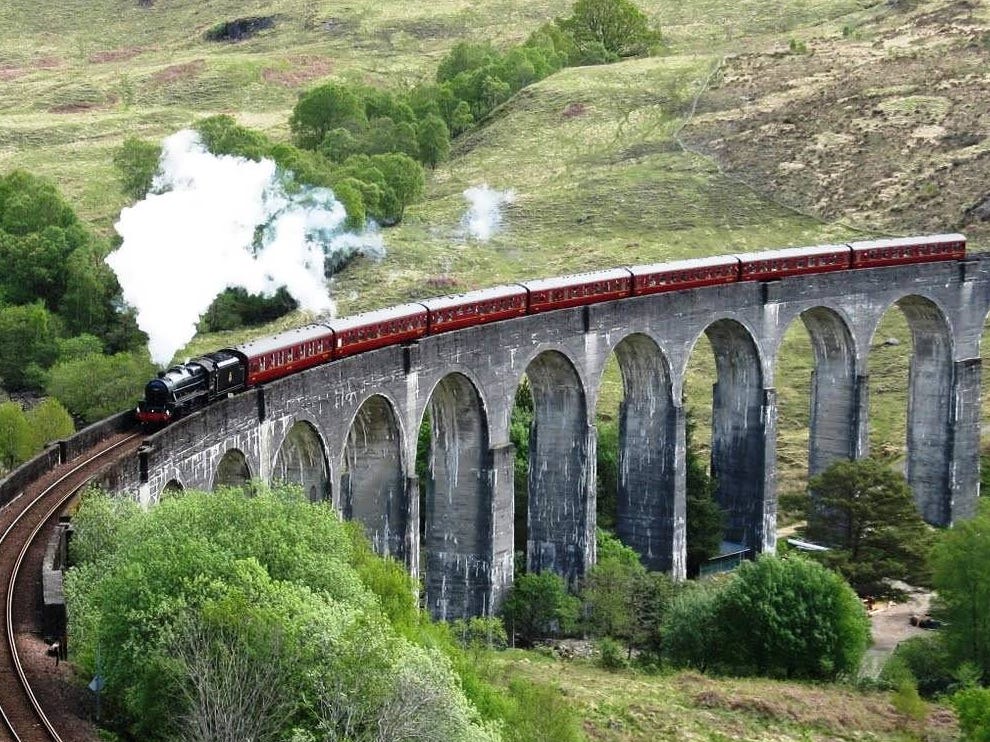
Warner Bros.
For the most part, students travel to and from the castle via the Hogwarts Express throughout the "Harry Potter" series - the biggest exception being Ron and Harry's flying car adventure during their second year.
But since the first steam trains weren't invented until the early 19th century, this clearly isn't how transportation always worked.
In a 2015 feature on Pottermore (now Wizarding World), Rowling wrote that students used to arrive at Hogwarts however they wanted, including by broom, magical creatures, and even Portkeys.
But between Muggle sightings and students falling "Portkey-sick" from the dizzying motion, a better method was needed, so they created the Hogwarts Express.
The school's motto is 'Never tickle a sleeping dragon'
The Hogwarts crest features a large "H" surrounded by the animal symbols of the four houses - the Gryffindor lion, the Ravenclaw eagle, the Hufflepuff badger, and the Slytherin snake.
The bottom of the crest also has the school motto in Latin, "Draco dormiens nunquam titillandus," which roughly translates to "Never tickle a sleeping dragon."
It may seem like a silly saying, but in a 2005 press conference, Rowling said she wanted an "entirely practical piece of advice for the Hogwarts school motto."
Some of the Hogwarts portraits are more capable than others
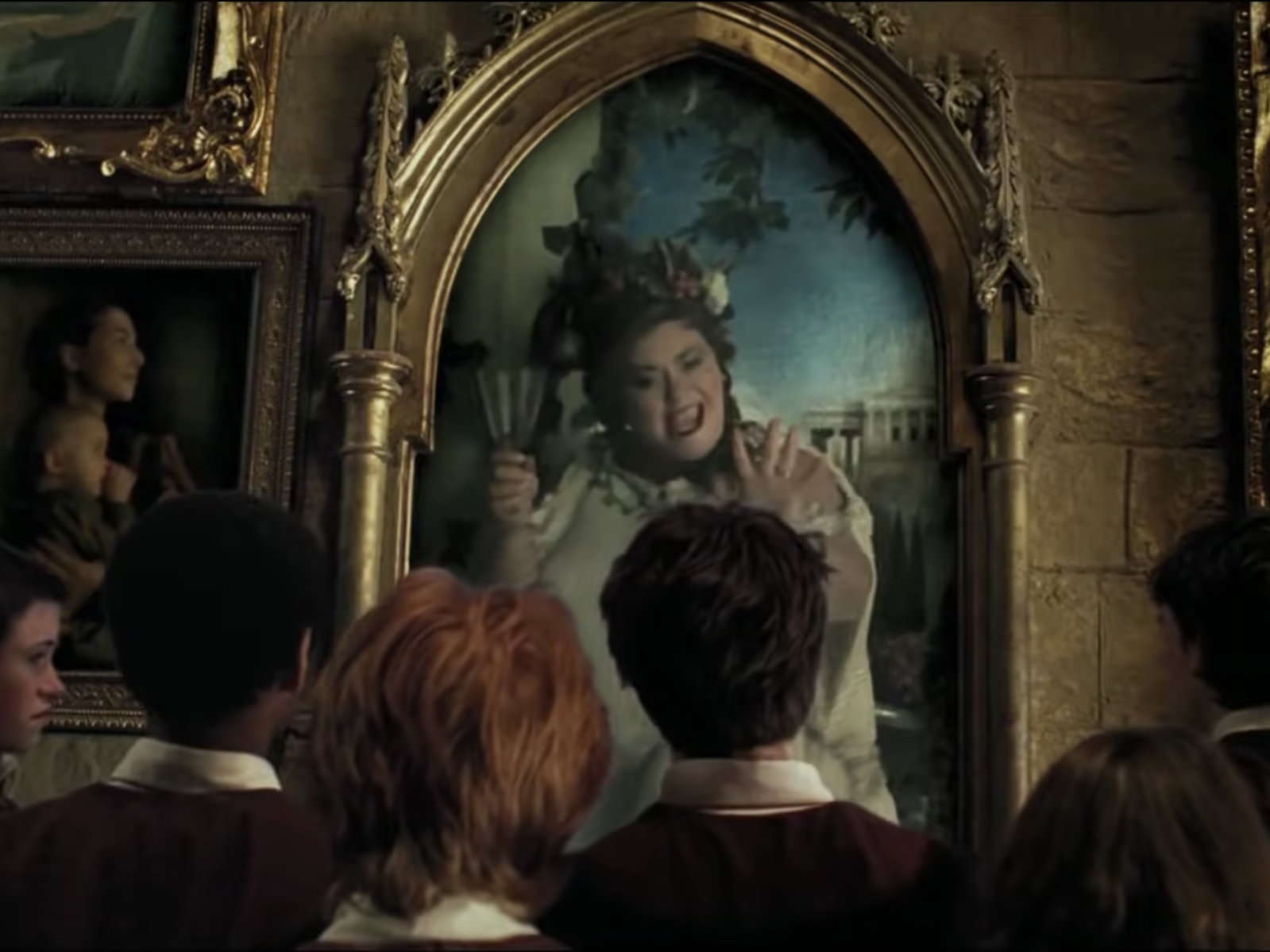
Warner Bros.
The portraits hanging at Hogwarts are no ordinary paintings. The subjects can talk, move around, and even walk into other portraits.
In another 2015 feature on Pottermore, Rowling revealed some of the secrets behind the wall hangings.
Though it may seem like the person has been captured in the portrait, the painting is simply imitating the subject's behavior and common catchphrases.
This is why Sir Cadogan's portrait is always challenging people and other portraits to duels.
But the headmasters and headmistresses of the school have their portraits made prior to their deaths so they can spend more time teaching it their behavior and sharing their knowledge in order to advise their predecessors.
There are 7 mandatory courses for 1st-year students
Hogwarts has a set of classes that are mandatory for first-year students: Transfiguration, Charms, Potions, History of Magic, Defence Against the Dark Arts, Astronomy, and Herbology.
Broomstick flying lessons are also compulsory in addition to those courses.
In their second year, students have to pick at least two more classes to add to their schedule. These can be Arithmancy, Muggle Studies, Divination, Study of Ancient Runes, or Care of Magical Creatures.
According to a 2015 Pottermore feature, Rowling originally included Divination, Alchemy, and a course called Beasts on the mandatory first-year list.
There were also a few course name changes in her earlier drafts. Herbology was called Herbalism and Transfiguration was called Transfiguration/Metamorphosis.
The addition of plumbing threatened the entrance to the Chamber of Secrets
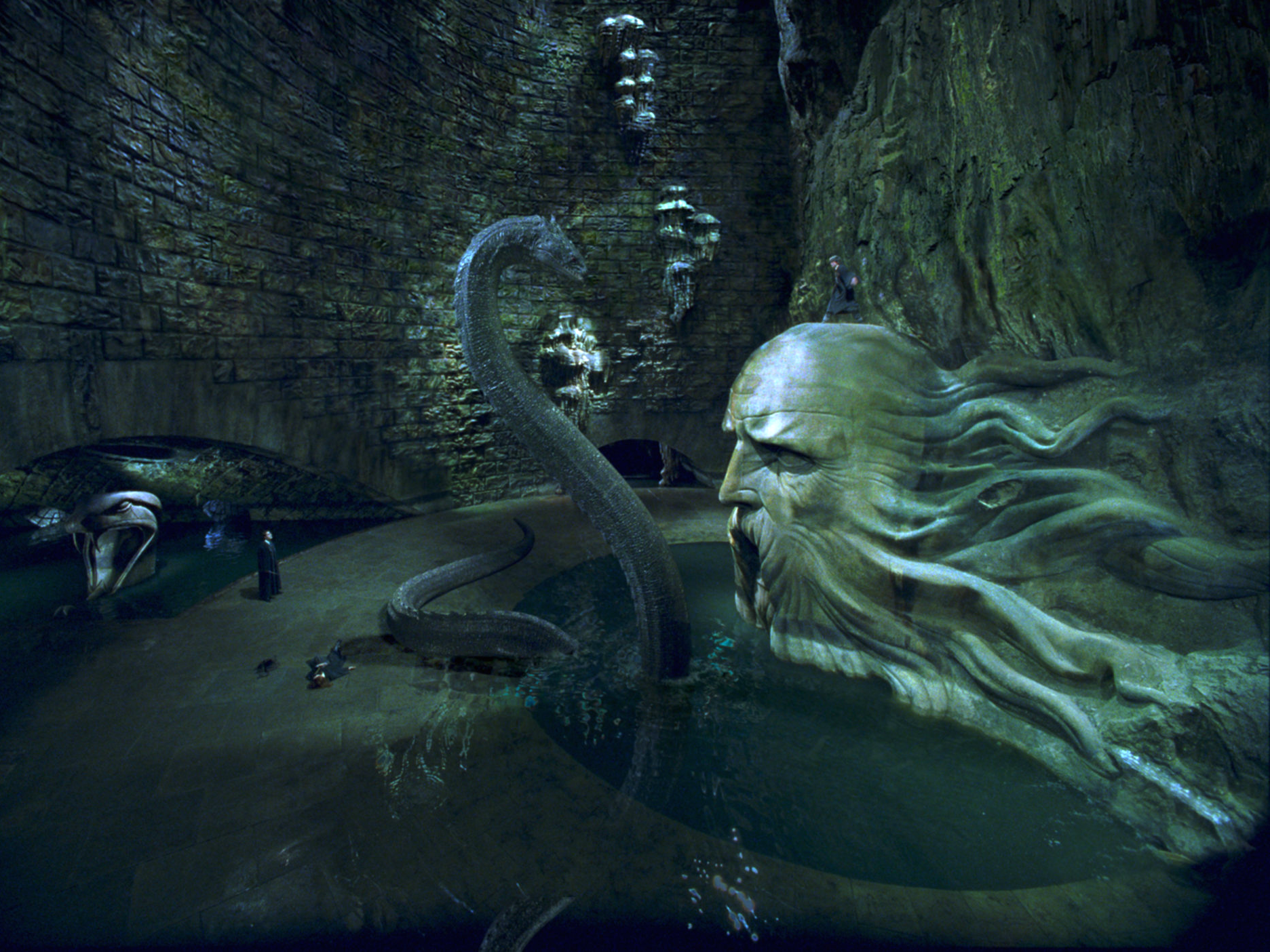
Warner Bros.
Fans likely know that the Chamber of Secrets was secretly created by Salazar Slytherin and hidden within the depths of the castle.
In a 2015 Pottermore feature, Rowling wrote that the original entrance to the chamber was through a trapdoor and several tunnels. But when Hogwarts first installed plumbing in the 18th century, a bathroom was built right where the trapdoor was.
Corvinus Gaunt, a direct descendant of Slytherin at Hogwarts, protected the door and created a new way to enter it through a sink in the bathroom.
The entrances to each common room reflect the 4 Hogwarts' Houses
Each Hogwarts House has its own common room for its students. And each of those common rooms has its own set of defenses that help keep the students safe - and stop intruders from other houses from entering.
In a 2015 Pottermore feature, Rowling said that the entrances to each common room roughly match the "intellectual reputation" of the students in that particular house.
The Hufflepuff common room is the only one that didn't appear in the books, but Rowling explained how it works in the article.
It's located near the Hogwarts kitchens, and students entered it through a large pile of barrels. The students must tap a specific (unchanging) barrel in the rhythm of "Helga Hufflepuff" to enter. Tap the incorrect one the wrong number of times, and the intruder will be soaked in vinegar from a neighboring barrel.
To enter Gryffindor's, the students must provide the Fat Lady with the current password to pass through her portrait. Since it changes regularly, it's hard for other students (and even some of the Gryffindors) to get in.
Slytherin's common room similarly requires a changing password, and it's secretively tucked away in Hogwarts' dungeons.
Finally, Ravenclaw's common-room entrance is perhaps the most fitting for the traits of the house. To test its students' sharp intellect and wit, a bronze knocker in the shape of an eagle asks the enterer a riddle that they must provide a sufficient answer to.
The movie version of the castle was filmed in several locations
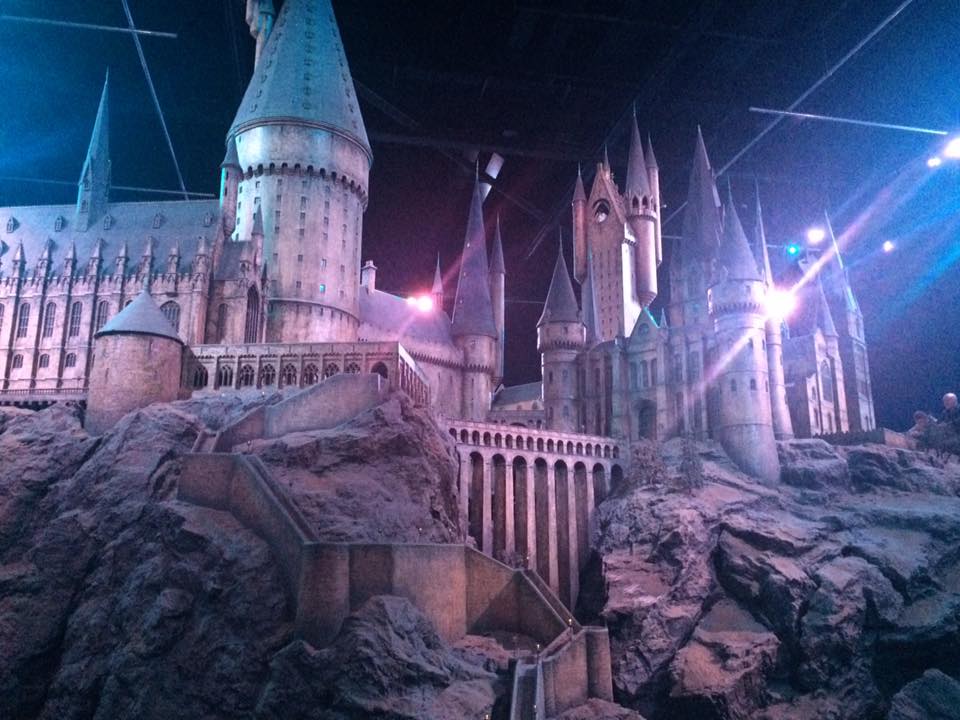
Fiona Clair/Insider
The filmmakers successfully pulled off making Hogwarts look and feel like a cohesive castle, but it's actually a mashup of several different filming locations in Scotland and England.
Some exterior shots of the castle were filmed at Alnwick Castle, while many of the interior shots came from Lacock Abbey, Gloucester Cathedral, Oxford University, and the Warner Bros. Studio in Leavesden.
Some of the sweeping shots of the castle's exterior were also filmed using a 1:24 scale model at the studio.
The famous Merlin attended Hogwarts
Characters in "Harry Potter" occasionally evoke the name of Merlin with the common exclamation "Merlin's beard!"
But on top of being one of the most legendary wizards of all time, he was also a Hogwarts alum.
According to a 2015 feature Rowling wrote for Pottermore, Merlin attended Hogwarts in his youth and was sorted into Slytherin.
The Order of Merlin medals, given to exceptional wizards, are even green to match his house's colors.
The Sorting Hat originally belonged to Godric Gryffindor
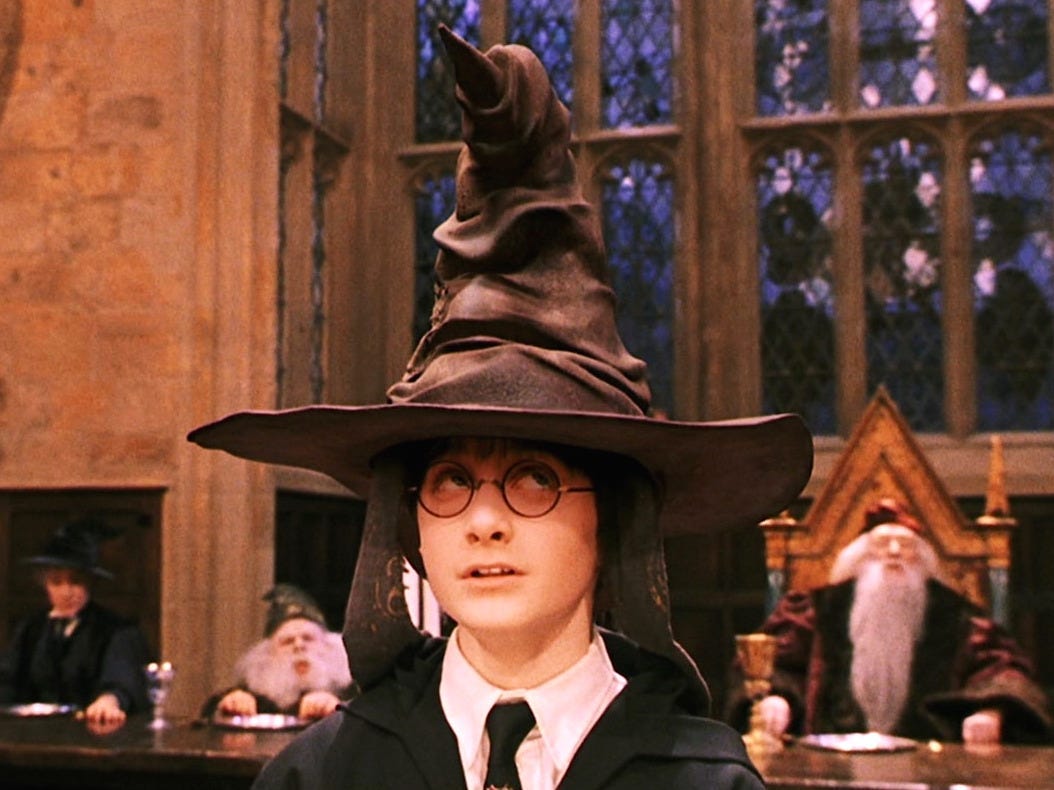
Warner Brothers
The Sorting Hat, responsible for deciding which Hogwarts House each new student is placed in, apparently belonged to one of the school's founders, Godric Gryffindor.
According to Pottermore, it started as a normal hat before it was jointly enchanted by the four Hogwarts founders.
They each imparted the magical object with their intelligence so it could properly sort the incoming students into the correct house.
The Ministry of Magic covers all of the students' tuition
Over the years, fans have wondered how much it costs to go to Hogwarts, and in a 2015 tweet, Rowling responded.
"There's no tuition fee!" she wrote. "The Ministry of Magic covers the cost of all magical education!"
But from the books and movies, we know that the students are responsible for purchasing all the uniforms, materials, and books required for each school year, so it's not totally free.
Not every student gets an acceptance letter delivered by an owl
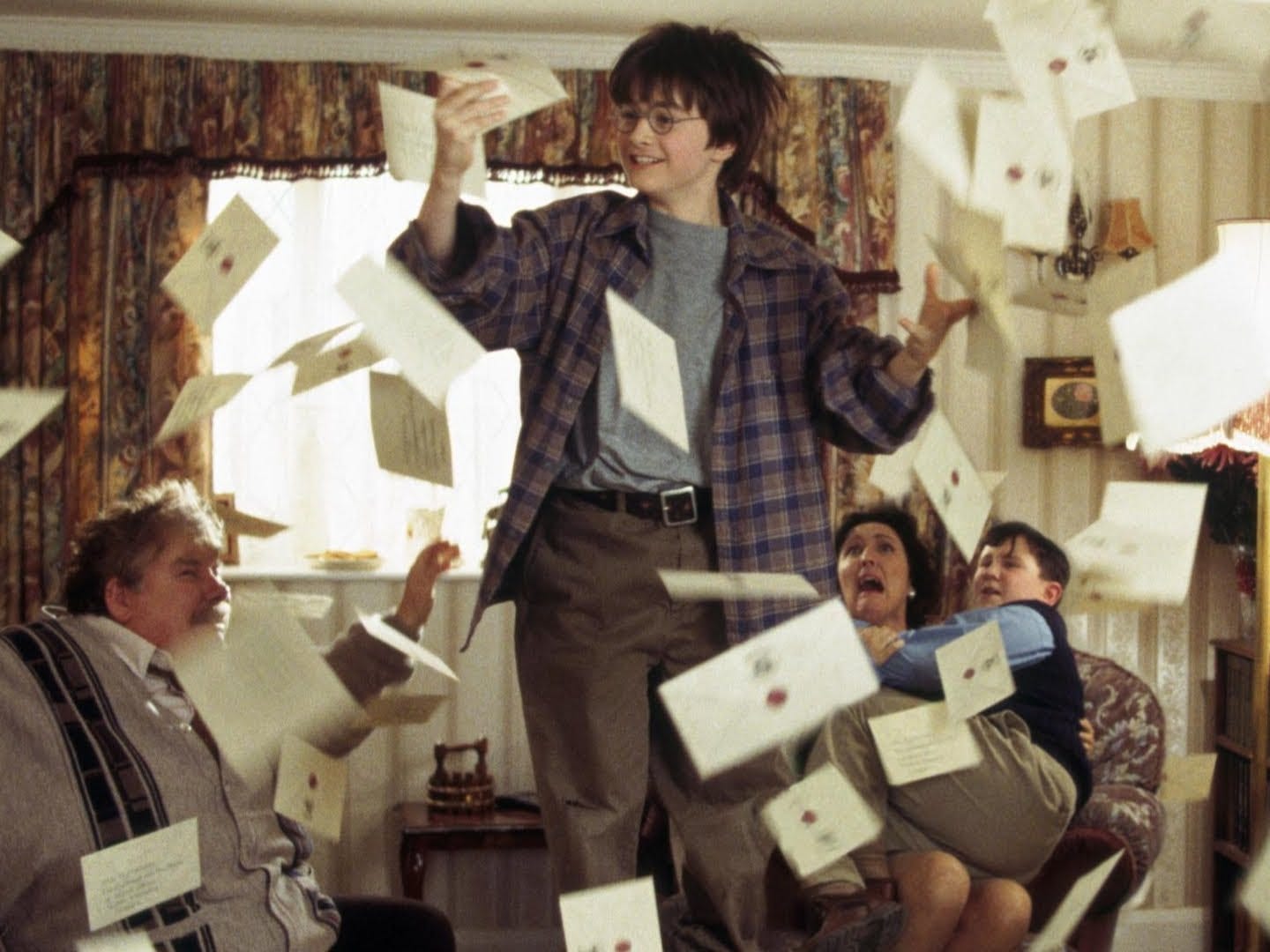
Warner Brothers
Many fans have eagerly awaited their Hogwarts acceptance letters since turning 11, but it turns out Muggle-born witches and wizards get notified in a slightly different way.
Instead of getting a letter through the owl post, the incoming students apparently get a visit from a staff member, who explains what's going on and helps them prepare for the school year.
The school was voted one of the best in Scotland
In a real-life 2008 poll of the best educational establishments in Scotland, the fictional school was voted 36th, receiving high marks in "atmosphere" and "discipline," The Scotsman reported.
Though Hogwarts wasn't a serious submission to the list, it did end up ranking higher than Scotland's oldest boarding school, Loretto School.
Special enchantments conceal Hogwarts from Muggles
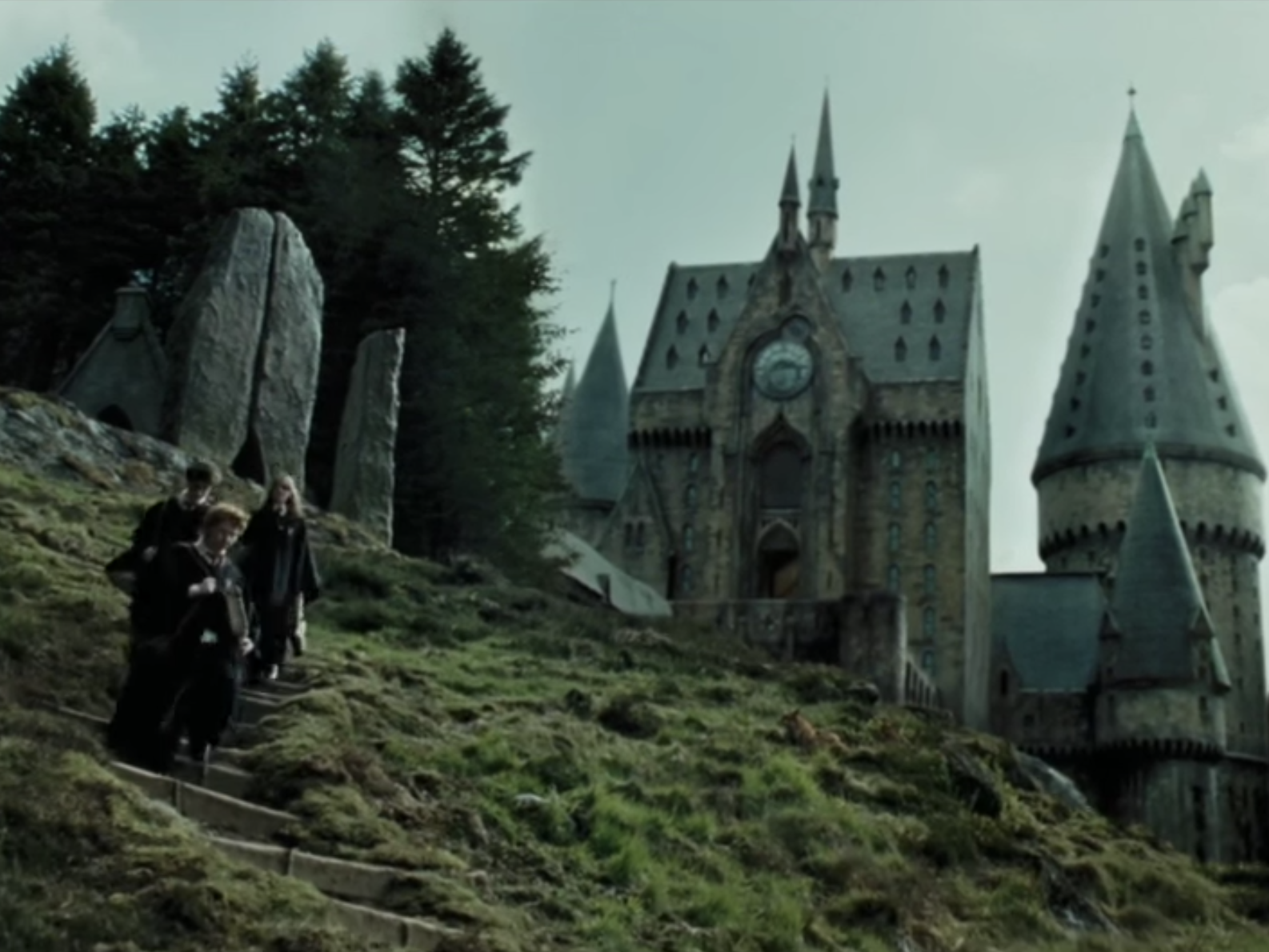
Warner Bros.
Hogwarts needs to be well-guarded from both dark wizards and Muggles, so there are numerous spells and enchantments surrounding the castle.
For example, it appears as an old abandoned castle to any Muggles who wander by.
The school exists somewhere in the Scottish Highlands, but its exact coordinates are "unplottable" in an effort to keep all the students safe.
There are few electronic devices at Hogwarts
In "Harry Potter and the Goblet of Fire," Hermione says that electricity, radar, and computers are all just Muggle replacements for magic and tend to "go haywire" at Hogwarts.
But throughout the books and movies, it's clear that the Wizarding World adopted a few Muggle technologies, like cars and radios.
The school has over 140 magical staircases
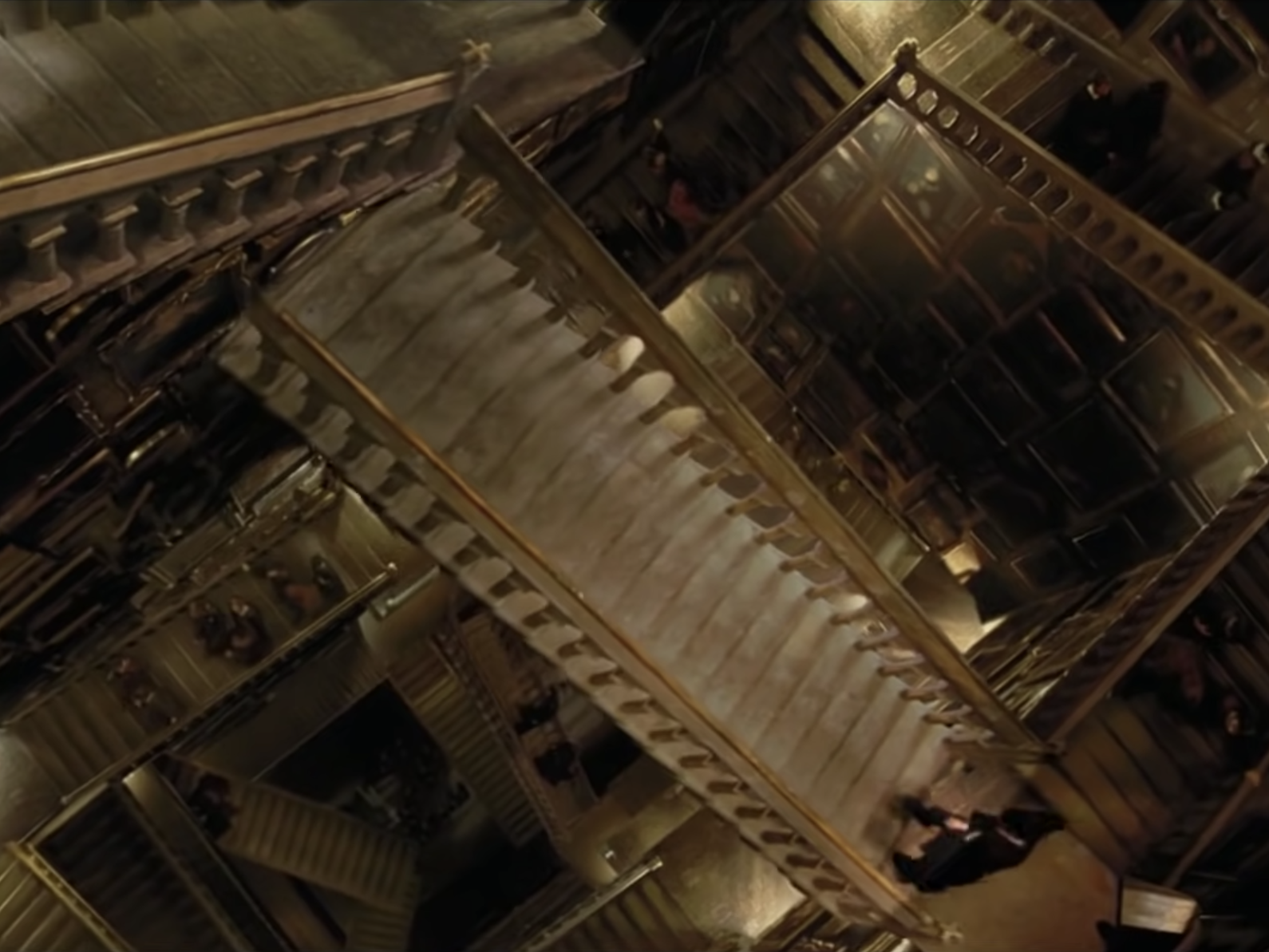
Warner Bros.
According to Wizarding World, there are 142 staircases varying "in shape, size, and destination" at Hogwarts.
As Percy Weasley advises the first years in "Harry Potter and the Sorcerer's Stone," the students have to be alert while walking to their classes because the staircases like to change position and vanish.
Although the number of moving steps adds to the mystery and enormity of the establishment, it's also led many fans to criticize the school for being inaccessible to any prospective students who aren't able-bodied.
